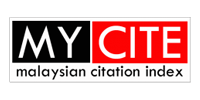Characterization of Kapok (Ceiba pentandra (L.) Gaertn.) and Its Reusability in Oil Sorption
DOI:
https://doi.org/10.58915/ijneam.v17iDecember.1607Keywords:
Kapok fiber, Natural fibers, Oil sorption, Oil sorbent, Reusability, Water pollutionAbstract
Natural fiber such as kapok (Ceiba pentandra L. Gaertn.) is an effective, environmentally friendly, and sustainable material for oil sorption due to its unique structure, which offers high sorption ability, good selectivity, and reusability. Kapok fiber was characterized using Fourier Transform Infrared Spectroscopy (FTIR), Scanning Electron Microscopy (SEM), and contact angle. The oil sorption characteristics of kapok fiber were evaluated across different types of cooking oil. The result demonstrated that kapok possesses excellent hydrophobic-oleophilic properties, including a hollow lumen structure of kapok fibers that enables it to absorb and retain large amounts of oil while repelling water. Additionally, a waxy substance on its surface further enhances its hydrophobic properties. Kapok fiber also exhibits a contact angle of 123.80º > 90º, proving that kapok has low water wettability. The reusability of 1g kapok fiber in oil sorption is tested by using various types of cooking oil with the following standard test method for sorbent performance of adsorbents (ASTM F726-12) across five types of cooking oil. The results show that the kapok fiber retained the oil absorbed even after being reused for 24 cycles, despite slight decreases.

















